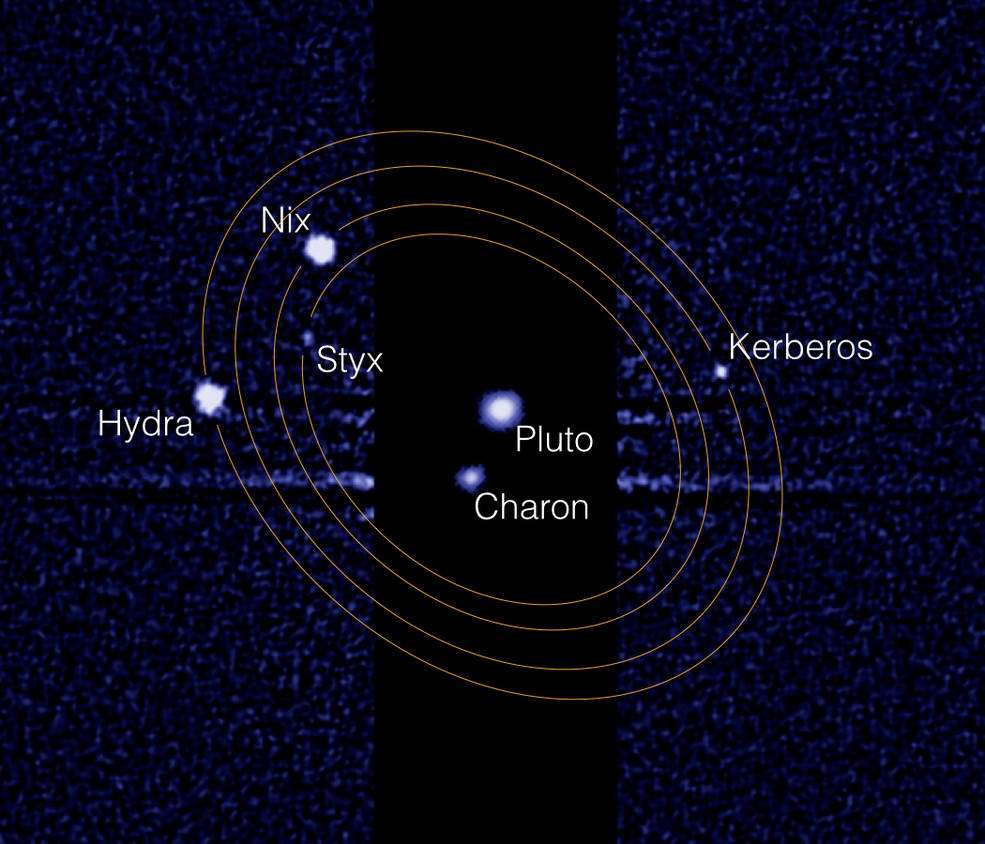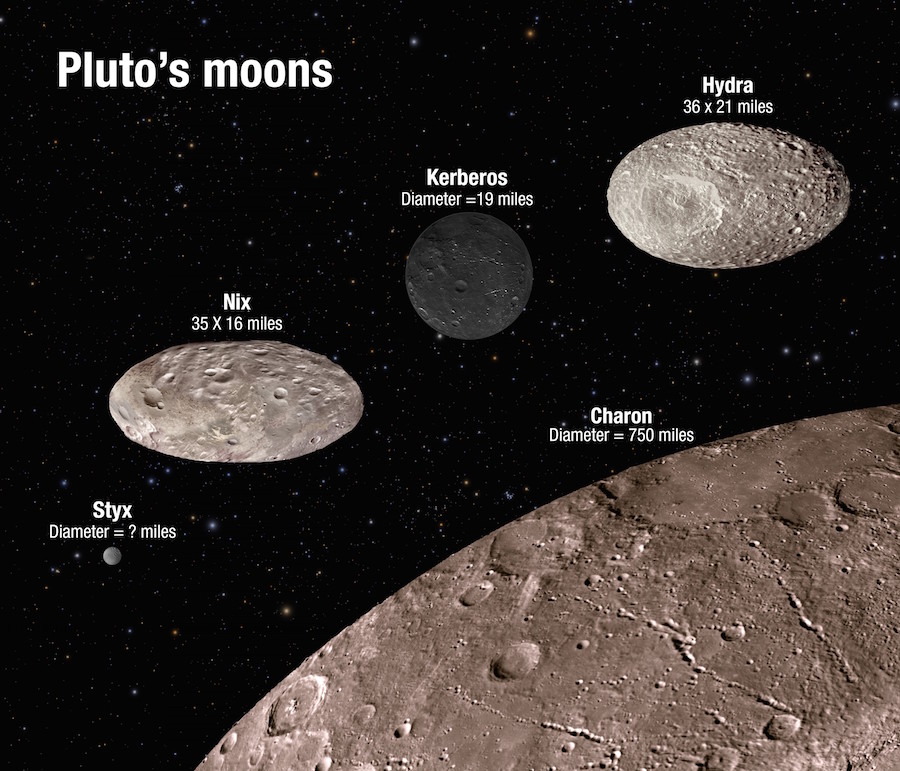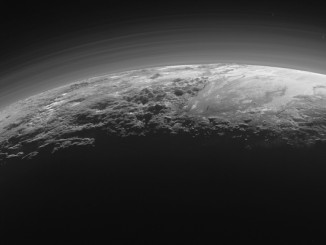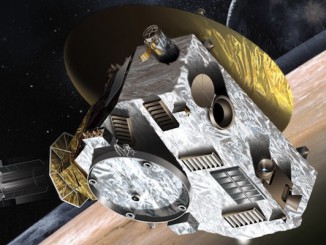STORY WRITTEN FOR CBS NEWS & USED WITH PERMISSION

As NASA’s New Horizons probe closes in on Pluto, the Hubble Space telescope has been scouting its retinue of five known moons, discovering that at least two are tumbling chaotically in the complex gravity of the dwarf planet and its large moon, Charon, researchers said Wednesday.
The moons in question, Nix and Hydra, are believed to be too small for their own gravity to pull them into spheres and instead are thought to be elongated, shaped more like footballs or potatoes. Nix measures about 35 miles by 16 miles while Hydra is slightly larger, measuring approximately 36-by-21 miles.
The other two smaller moons in the Pluto system — Styx and Kerberos — are two small for Hubble to accurately determine their size or shape, but they are likely elongated as well. In any case, conventional wisdom holds that such moons would be gravitationally held in place with their long axes pointing toward the central body as they orbit their primary.
But data from the Hubble Space Telescope, based on a detailed analysis of brightness fluctuations, shows Nix and Hydra are instead moving in a chaotic manner due to complex gravitational interactions between the moons, Pluto and Charon.
“If you can imagine what it would be like to live on (such a moon), it’s a very strange world,” said Mark Showalter, a senior research scientist at the SETI Institute and one of the lead authors of a report in the British journal Nature describing the observations. “You would literally not know if the sun is coming up tomorrow. For that matter, the sun might rise in the west and set in the East.
“In fact, if you had real estate on the north pole of Nix, you might suddenly discover one day you’re on the south pole instead. This is the environment we’re talking about for Nix and for Hydra and, we believe, for the other moons as well.”
Charon, roughly half the size of Pluto, has a diameter of about 750 miles and takes 6.4 days to complete one orbit around the system’s center of mass. That center of mass is located at a point in space roughly 600 miles from Pluto, leading many to consider Pluto and Charon a binary dwarf. The way that interact with each other and the other moons may provide insights into how planets might orbit binary stars.
Moving outward from Charon, discovered in 1978, astronomers using Hubble over the past several years found four additional moons: Styx, then Nix, Kerberos and Hydra.

Credit: NASA/ESA/A. Feild (STScI)
Hubble’s keen vision also has revealed that Kerberos is as dark as charcoal while the others are much brighter. Scientists had expected all the moons would be more uniform in appearance, given their suspected common origin, but that is not the case.
“Nix and Hydra we find are fairly bright objects,” Showalter said. “They reflect about 40 percent of the sunlight that hits them. That would be comparable to dirty snow or desert sand. We would definitely think of them as fairly bright objects. And in fact in this way they are very similar to Charon.”
Styx is too small for Hubble astronomers to draw any conclusions. But Kerberos, which orbits between Nix and Hydra, turned out to be a “real shocker,” Showalter said.
“Kerberos has to be a very, very dark object,” he said. “In fact, it can only probably reflect about 4 percent of the light that strikes it. So think of a charcoal briquette orbiting between two dirty snowballs. That’s a very, very strange result.”
Scientists believe Pluto collided with another similarly-sized body billions of years ago, early in the history of the solar system. And therein lies the mystery.
“A lot of us believe this one impact created a big debris cloud and Charon formed out of the innermost part of that debris and, with some details still to be filled in, the other moons are probably leftovers from that cloud,” said Douglas Hamilton, an astronomer at the University of Maryland and co-author of the Nature paper.
“If you imagine that the impactor that plowed into Pluto was a very dark object — Pluto itself is a much brighter object — you would end up with this heterogeneous cloud where there’s some dark material mixed in with the bright material and maybe Kerberos is just a chip off of the impactor rather than a chip off of Pluto.”
The New Horizons probe is about 30 million miles from Pluto and closing in at nearly nine miles per second after a nine-year 3-billion-mile voyage from Earth. The spacecraft will fly past the dwarf planet and its moons on July 14.
Throughout the encounter, its cameras and instruments will study Pluto and its moons to determine their structure and composition, the constituents of Pluto’s tenuous atmosphere and to gain insights into the nature of the remote Kuiper belt where Pluto and other remnants of the solar system’s formation slowly orbit the distant sun.
“New Horizons will certainly revolutionize our knowledge of these moons,” said John Spencer, a scientist at the Southwest Research Institute. “The pictures are getting better every day. It’s really an exciting time for us.”



